Teahouse trek in Nepal marries village culture with Himalayan majesty
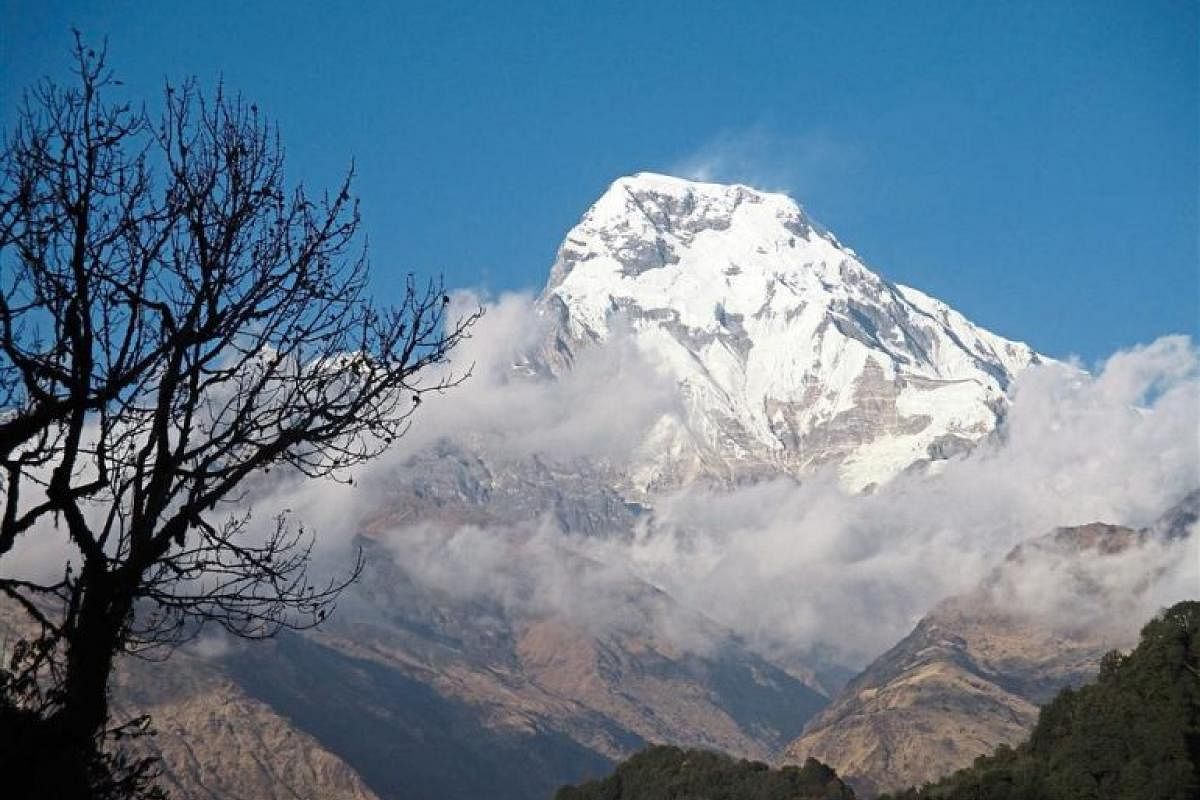
(THE STAR/ASIA NEWS NETWORK) - The earth wasn't exactly moving beneath our feet, but right where we were standing, the Indian tectonic plate was smashing in excruciating slow motion into the Eurasian plate, adding a few extra centimetres each year to the tallest mountain range in the world - the mighty Himalayas.
When these majestic mountains beckon, climbers and trekkers the world over answer - in droves - and I was one of them.
The secret to Nepal's trekking allure is the humble teahouse.
Ranging from simple bare-boned wooden huts to multi-storey brick residences, teahouses provide much more than just tea. They are actually more like inns or guest houses providing bed, bath and sustenance, thus eliminating the need to carry much unwanted weight (such as camping gear or food supplies) on a traveller's back.
If you add to that a guide and porter, like what our family of five did, you will have all the ingredients of a classic Nepal trek.
Teahouse trekking is not mountaineering in serious snow or ice. It does not demand any particular technical skill or equipment and is readily accessible to anyone with a sturdy pair of legs and a longing to see something different.
And so it was on a sunny day that we alighted from a bumpy van ride at Nayapul (elevation: 1,010m), a little town which is the starting point of many forays into the Annapurna region, west of the capital Kathmandu.
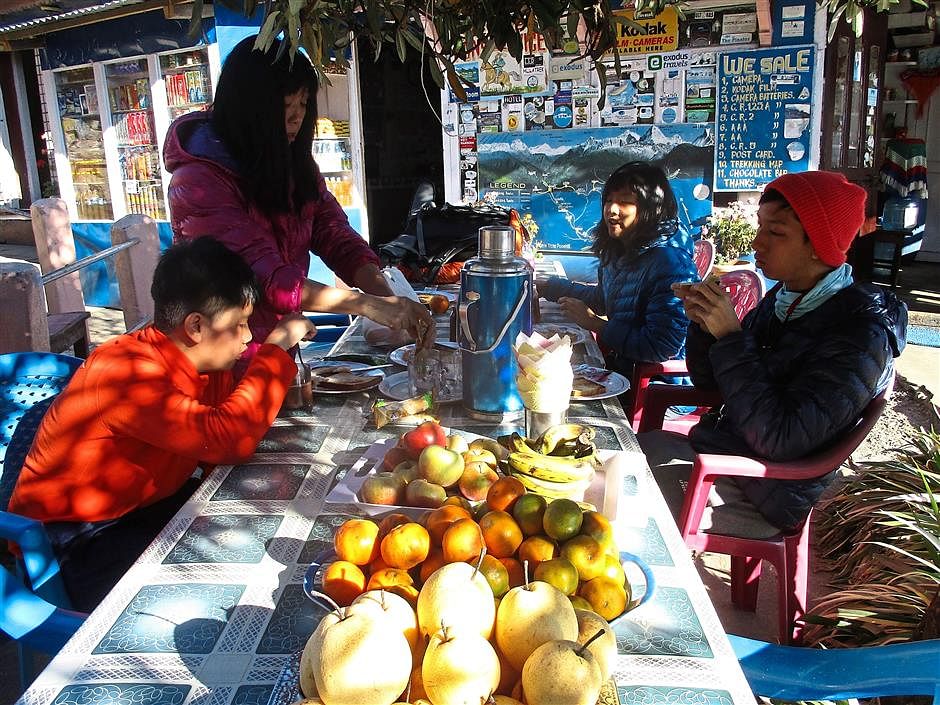
The initial part of the trek was a disarmingly flat walk, taking us right through little villages bustling with honking school buses and roadside peddlers busily hawking their produce. Everywhere, plump chickens and goats roamed freely.
Our ever-affable mountain guide Bhuwan radiated quiet Nepalese warmth as he shepherded us along, dipping periodically into his encyclopaedic knowledge of local culture, history and geography whenever we posed a question.
After we cleared the bridge across the Modi Khola river, the path took a steady incline past exquisitely sculptured rice field terraces and glacier-fed streams.
Animal traffic
We passed numerous huts and village schools, crossed suspension bridges and, in the distance, took in teasing glimpses of the distant Machhapuchchhre, or better known by its colloquial name Fish Tail Mountain, on account of its bifurcated peak.
We quickly understood that these trodden paths were not fashioned exclusively for the convenience of tourists, but rather, constituted essential transport arteries linking one village to another.
Every now and then, we would hear the pleasant tinkling of bells, which signalled us to move aside for an on-coming train of mules, which carried everything from vegetables and poultry to materials for housing.
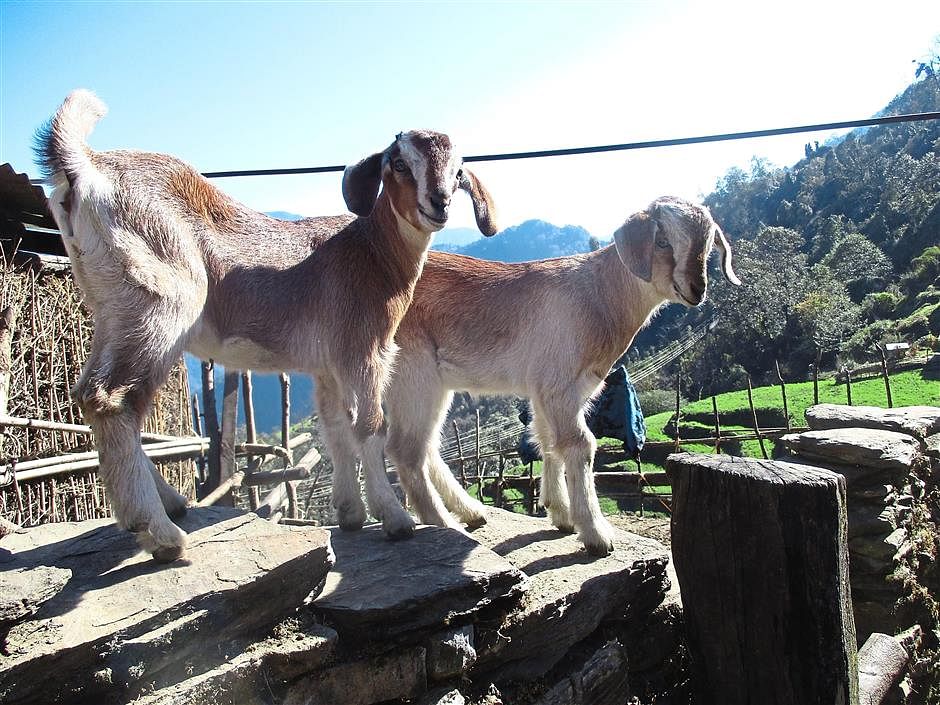
Of course, sharing a common mountain "highway" with animal traffic meant that we had ample opportunity to practise side-stepping liberally scattered mounds of goat, donkey and buffalo dung!
Before long, we could see a vast valley below us. After stopping for a simple lunch of fried rice and noodles at Tikhedunga (1,525m), all our ingested carbohydrates went to work as we ascended the infamous 3,000 steps that ran steeply up to Ulleri (1,950m).
It was a sobering reminder of our fitness as several groups of Nepali schoolchildren nonchalantly overtook us, chatting cheerfully with nary a hint of breathlessness.
Banthanti (2,130m) was our welcome overnight stop. We were fortunate to have booked rooms with attached baths and toilets. Beds were simple thin mattresses, which we supplemented with sleeping bags. There was electricity, hot showers and hey - at some places - even Wi-Fi!
But the thing to treasure each nippy evening was the warm and toasty fireplace, where one could bask in camaraderie with fellow travellers while tucking into traditional Nepali dal bhat (rice with vegetable curries and pickles) with utter relish.
Ready smiles
Refreshed and recharged the next morning, we continued our journey into rhododendron forests, where each spring, we were told, the flowers would put on a fiesta of colours.
Nepali mountain folk look hardy and weather-beaten. Yet, they possess a ready smile and a helpful demeanour, always responding with a greeting of "Namaste" to friends and strangers alike. Their lives seem basic in material terms, but rich in the things that matter.
Community rest stops constructed from stacked shale stones would providentially appear at strategic intervals, providing rest for tired feet and grand views that you would never get from your living room.
By afternoon, we made it to Ghorepani (2,850m), a large sprawling village. Since we had daylight on our side, we pushed on up to Poon Hill (3,210m) to catch the sunset, arriving at the summit just in time.
Imagine, if you will, looking out from the highest balcony in a colossal amphitheatre, with unending vistas stretched out in every direction.
Before us, the mighty Annapurna mountain range stood majestically in all its glory. The immensity was almost too hard to take in.
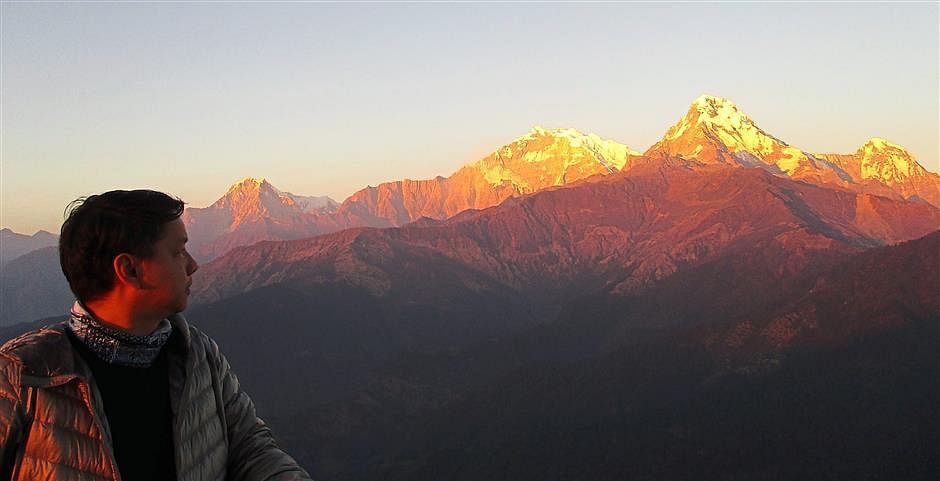
Among a host of other peaks, there was Dhaulagiri (8,167m) on our left, flanked by the mighty Annapurna I (8,091m) and her sisters, named simply II, III and IV, Annapurna South (7,219m), Hiunchuli (6,441m) and, our dear friend, the Fish Tail (6,993m).
The glow of the setting sun set their features alight with every imaginable shade of gold as we stood rooted and transfixed, taking it all in with stunned silence, before the curtain of night came down. What a show indeed.
Magical call
The following day, we were on a literal high, trudging in the company of these benevolent mountains, along a scenic ridge against a backdrop of azure skies. The flora around us was now decidedly sub-alpine. We could not help feeling on top of the world, for topographically speaking, we were.
The clear weather brought the mountains out in such sharp relief that we could even make out flurries of snow being blown off the peaks. It was then that I began to fathom the lure of the mountains. They stand silent and yet they speak to us.
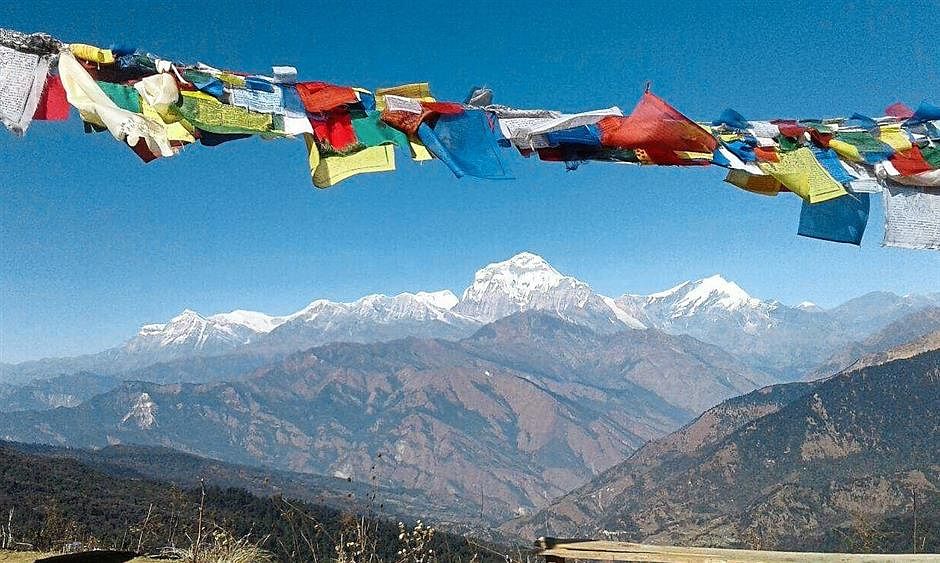
Perhaps it is their other-worldliness that awakens our spirit, igniting our repressed ardour for adventure and challenge. Even if we cannot find the words, we can certainly feel the calling.
After a delightful, picturesque morning in open high country, we broke at Deurali (2,960m) for another satisfying teahouse lunch of Tibetan food: momo (dumplings) and thukpa (soup noodles).
Reinvigorated, we re-entered the cover of the forest, straight into a knee-bruising descent down a rock-strewn valley, reaching Chuile (2,309m) only after nightfall.
When we opened our eyes next morning, we suddenly realised that our rooms commanded a million-dollar view of Fish Tail mountain and a breathtaking verdant valley.
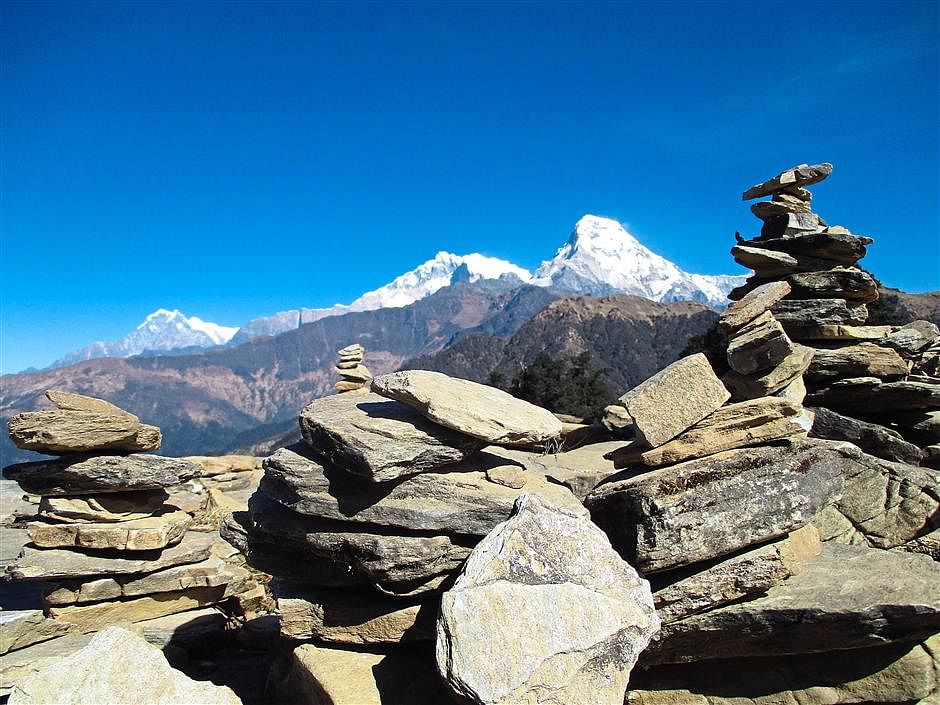
The slopes here were carpeted with terraced fields, growing everything from rice to pumpkins to lentils. Rural Nepalis are truly tillers of the earth, existing hand in hand with nature.
We savoured our last mountain views at Ghandruk (2,012m), before winding down the edge of a steep cultivated valley to complete our circuit at Nayapul.
The charm of teahouse trekking in Nepal is that nature and culture are closely interwoven.
For those who choose to trek from teahouse to teahouse, you will enjoy a journey in the clouds through mystical lands blessed by prayer flags, the highest peaks in the world and the Nepali way of life.
Join ST's Telegram channel and get the latest breaking news delivered to you.
